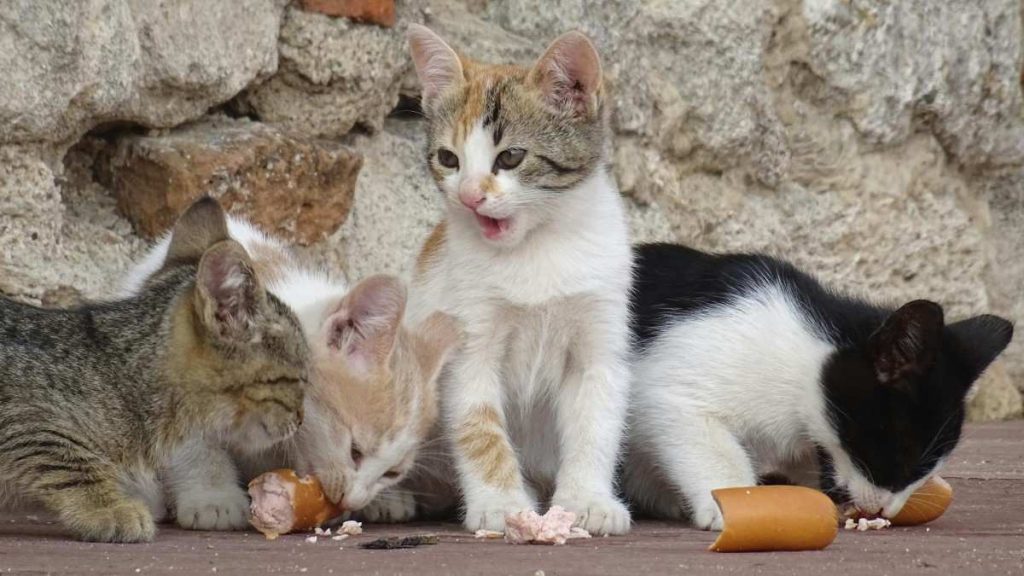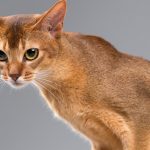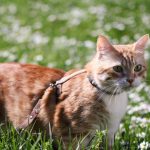Feeding your cat the right way is more than just filling a bowl—it’s about supporting their health, happiness, and well-being at every stage of life. As obligate carnivores, cats depend on essential nutrients found only in animal products. They’ve evolved as sharp hunters, thriving on small prey that naturally provides the perfect proportions of protein, fat, and limited carbohydrates. This natural diet remains the foundation of what your cat needs today for a balanced and complete diet.
To keep your kitty truly healthy, their food must include vital amino acids, fatty acids, vitamins, and minerals. Offering a diet that lacks any specific nutrient or relies on unnecessary supplements—without veterinarian approval—can be harmful. Always provide access to clean, fresh water, and remember that what you choose to feed plays a powerful role in shaping your cat’s future. This guide will walk you through how to give your cat the best possible start—or reset—for lifelong optimal nutrition.
How to Choose the Right Food for Your Cat
Choosing the best food for your cat depends on their age, weight, and health status. Different aged cats have unique needs, which is why age-appropriate diets are important. Cats with medical needs may need specialist food, recommended by your vet or nutrition-savvy veterinarians. I once fed a rescue cat dry food meant for adults when he was just a kitten—he quickly became underweight and weak. Once switched to a proper complete cat food, rich in meat, amino acids, and nutrients, he recovered and grew strong.
Avoid vegetarian or vegan food—it may sound healthy to us, but it doesn’t meet the biological needs of cats. Look for a high-quality brand listed under UK Pet Food or the Pet Food Manufacturers’ Association. Be aware of processed food, especially dry kibble, which can have high carbohydrate loads, plant-based proteins, and even bacteria, storage mites, or rancid fats if stored in warm warehouses or on pet store shelves. Your cat’s preferences, whether for wet food, canned food, or homemade diet, should match their needs—just make sure it’s labeled as complete food, not complementary. Follow the packaging recommendation, adjust based on behaviour, offer small meals, let them graze, or use set meals like three meals a day—whatever suits their daily allowance and helps maintain a healthy weight.
Why Cat Food Matters
Choosing the right cat food is more than just picking a brand off the shelf—it’s about making sure your cat stays healthy, active, and happy throughout its life. Cats are obligate carnivores, which means they must eat meat to survive. Their bodies are designed to absorb essential nutrients like protein, fats, vitamins, minerals, and specific amino acids only found in animal products. These support everything from their vision and heart health to their skin, coat, and immune system.
Feeding a complete and balanced diet ensures your cat gets the right proportions of protein, fat, and a small amount of carbohydrates. Unlike humans or dogs, cats cannot thrive on vegetarian or vegan diets. Poor quality food or the wrong type of diet can lead to serious health problems, including digestive issues, nutrient deficiencies, and long-term diseases. That’s why choosing the proper cat food—whether it’s dry, wet, or semi-moist—makes a real difference in your cat’s lifespan, energy, and overall well-being.
In short, the food you put in your cat’s bowl directly impacts their feline nutrition, daily behavior, and vital functions. Always look for labels that say “complete and balanced”, and talk to your veterinarian to choose the best diet for your cat’s age, health status, and preferences.
Types of Cat Food: What Are Your Options?
When it comes to cat food, there are four main types to choose from:
1. Dry Cat Food (Kibble)
Dry food contains 6–10% water, making it less messy and easier to store. It’s made by combining ingredients like meat or meat byproducts, grains, fish meal, fiber, and vitamins, which are then extruded into bite-sized pieces. These are often coated with animal fat to improve taste.
Pros:
- Inexpensive and convenient for free-choice feeding (leaving food out all day)
- Long shelf life when stored properly in an airtight container in a cool, dry place
- Easy to portion and handle
Cons:
- May be less palatable or digestible than wet food
- Prolonged storage can cause rancid fats and nutrient deterioration
- Low moisture content, so cats need to drink plenty of fresh water
2. Semi-Moist Cat Food
This type contains about 35% moisture and is softer than dry food. Its main ingredients include meat byproducts, soybean meal, grain byproducts, and preservatives.
Pros:
- Often more appealing in texture than dry food
- Mid-range price
- Convenient for free-choice feeding
Cons:
- Can dry out quickly once opened
- May spoil or become rancid
- Still not as hydrating as canned food
3. Canned (Wet) Cat Food
Canned food is the most hydrating, with at least 75% water content. It’s usually the most expensive, but also the most palatable, especially for finicky eaters.
Pros:
- Excellent source of moisture
- Offers a variety of textures and flavors
- Helps with hydration and digestion
Cons:
- Must be refrigerated after opening
- Short shelf life once opened
- Some gourmet versions may be nutritionally incomplete, so it’s important to read nutrition labels for AAFCO approval
Summary
Each type of commercial cat food has its benefits and drawbacks. Dry food is budget-friendly and easy to store, but low in moisture. Semi-moist food is softer but less common. Canned food offers superior taste and hydration but requires refrigeration. Whichever you choose, make sure it is labeled “complete and balanced” to meet your cat’s nutritional needs.
Key Nutrients Your Cat Needs
Not all cat food is created equal. To make sure your cat gets a balanced diet, look for these essential nutrients:
-
Protein
- Source: Chicken, turkey, fish, lamb, or beef.
- Why It’s Important: Provides energy and supports muscle growth.
-
Fats
- Source: Fish oil, chicken fat, or flaxseed oil.
- Why It’s Important: Keeps your cat’s coat shiny and skin healthy.
-
Taurine
- Source: Meat and fish.
- Why It’s Important: Essential for heart and eye health.
-
Vitamins and Minerals
- Source: Added supplements or natural ingredients.
- Why It’s Important: Supports overall health and immunity.
-
Water
- Why It’s Important: Cats are prone to urinary tract issues, so hydration is key.
Feeding Tips for Happy, Healthy Cats
-
Stick to a Schedule
Cats thrive on routine. Feed them at the same time every day to create consistency. -
Don’t Overfeed
Overfeeding can lead to obesity. Follow the recommended portion sizes on the food packaging based on your cat’s weight and activity level. -
Fresh Water is Essential
Always keep fresh, clean water available for your cat. A water fountain can encourage your cat to drink more. -
Mix Wet and Dry Food
Combining wet and dry food provides variety and ensures your cat gets enough moisture. -
Avoid Feeding Human Food
Foods like chocolate, onions, garlic, and grapes are toxic to cats. Stick to food formulated specifically for them.
Final Thoughts
Choosing the right cat food isn’t just about taste—it’s about giving your kitty the right fuel to stay healthy, active, and happy. Whether it’s dry, semi-moist, or canned food, every cat has its own preferences and needs. The most important thing is to ensure the food is complete and balanced, providing all the essential nutrients, including protein, vitamins, fats, and minerals.
Remember, cats are obligate carnivores, which means they must eat meat to thrive. Foods labeled with an AAFCO nutritional guarantee or approved by UK Pet Food help ensure high quality and safety. Always check the packaging for ingredients and feeding recommendations based on your cat’s age, weight, and health status.
No matter what food type you choose, always provide clean, fresh water and avoid overfeeding or too many treats. And when in doubt, your veterinarian is the best source for personalized advice. With the right diet, your cat won’t just live well—they’ll truly thrive.
Frequently Asked Questions (FAQs)
1. What type of food is best for my cat?
The best food is one labeled “complete and balanced” for your cat’s age, weight, and health needs. It can be dry, wet, or a mix of both—depending on your cat’s preference.
2. Can I feed my cat a vegetarian or vegan diet?
No. Cats are obligate carnivores, which means they must eat meat. Plant-based diets do not provide all the nutrients cats need to stay healthy.
3. How much should I feed my cat each day?
Check the packaging for feeding guidelines based on your cat’s age and weight. It’s best to measure the food and adjust based on your cat’s activity level and body condition.
4. Are cat treats safe to give daily?
Occasional treats are fine, but they shouldn’t make up more than 10–15% of your cat’s daily calories. Too many treats can cause weight gain and nutritional imbalance.
5. Is homemade food better than commercial cat food?
Homemade diets can be risky if not carefully planned with a vet. It’s safer to choose commercially prepared food with proven nutritional balance unless recommended otherwise.


